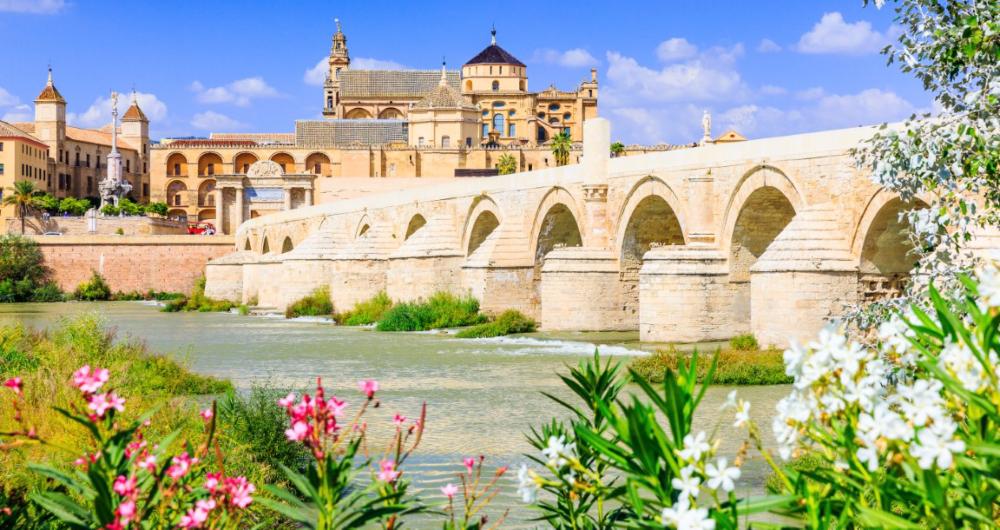In This Article
Need a magical escape filled with Moorish wonders and vibrant patios? Head to Córdoba! Wander ancient streets, marvel at iconic architecture, and savor Andalusian cuisine. Whether you're chasing history, culture, or romance, Córdoba blends centuries of beauty and soul.
When I like to visit
The best time to visit Córdoba is in spring (March–May) and early fall (September–October). Spring is especially magical with floral festivals and mild weather, while fall offers comfortable temperatures for sightseeing.
Tips for getting There
- If you are traveling by car: Córdoba is easily reached via the A-4 motorway, about 1 hour 40 minutes from Seville or 2 hours from Málaga.
- By Train: High-speed AVE trains connect Córdoba to Madrid, Seville, and Málaga in under 2 hours.
- By Bus: Several bus companies operate routes from major Andalusian cities to Córdoba’s central bus station.
Where I like to stay
- Hospes Palacio del Bailío – Luxurious hotel housed in a 16th-century palace with a Roman ruin under the pool!
- Hotel Madinat – Boutique hotel in the heart of the old Jewish Quarter with rooftop terrace views.
- Las Casas de la Judería – Elegant interconnected houses featuring charming courtyards and a peaceful atmosphere.
Best Things to Do
1. Marvel at Centuries of History at the Mosque Cathedral of Cordoba
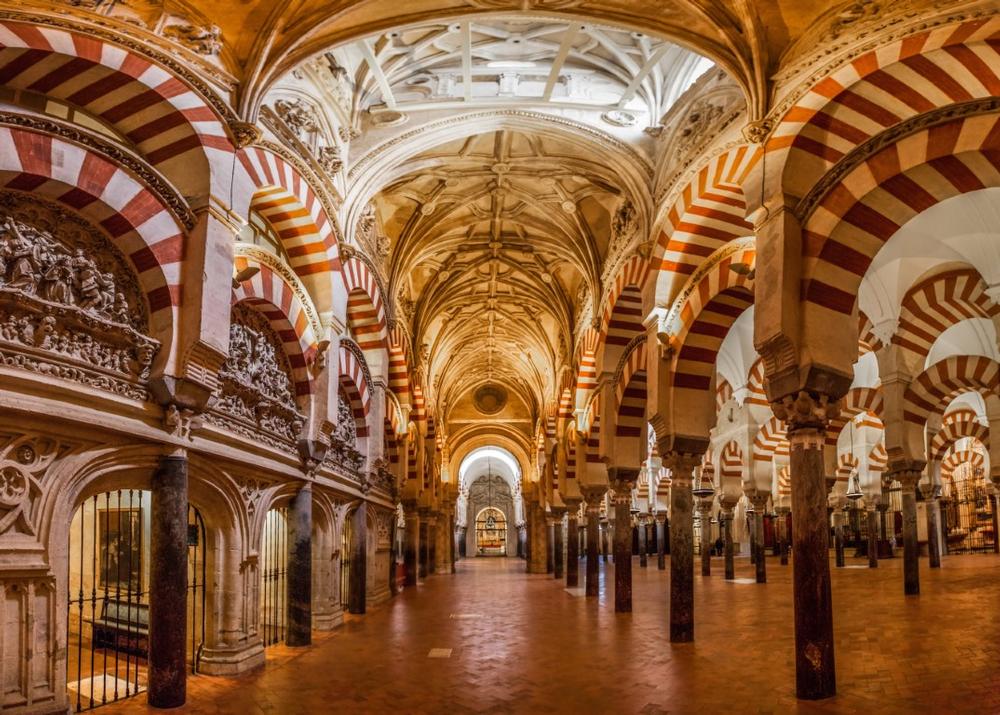
© akulamatiau/stock.adobe.com
This temple monument is currently a Catholic Church in the Diocese of Cordoba and goes by several names. It is known as the Great Mosque of Cordoba and the Mezquita. The first church on the site was built by the Visigoths. When the Moors first conquered the area, they shared the space with the Christians but subsequently purchased it outright. A mosque was built to rival those in Baghdad, Jerusalem and Damascus. It was enlarged several time before the Christian Reconquistas retook the land and converted the building to a Catholic church. The layers of history are evident in the building.
Mosque Cathedral of Cordoba, C/. Cardenal Herrero 1, 14003 Córdoba, Phone: +34-9-57-47-05-12
2. Wander the Ruins of the Legendary Medina Azahara
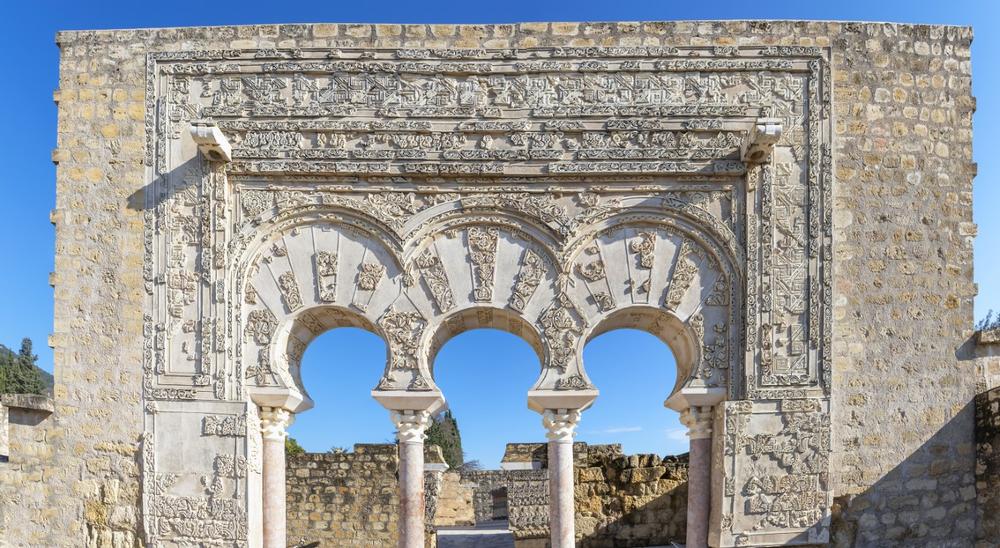
© Alfredo/stock.adobe.com
On the western outskirts of Cordoba are the ruins of a vast, fortified Moorish palace-city. It was built between 936 and 940 by the first Caliph of Cordoba, as a symbol of power and prestige. It was designed to be superior to those of his rivals in North Africa and Baghdad. The complex comprised a mosque, a mint, government offices, workshops, barracks, homes and baths. An aqueduct brought water to the city. It was sacked in 1010 and then left abandoned. Parts of the buildings were used elsewhere. In 1910 excavations started and to date about 10% of the 112 ha site of Medina Azahara has been charted.
3. Stand Where Ancient Rome Lives On at the Roman Temple
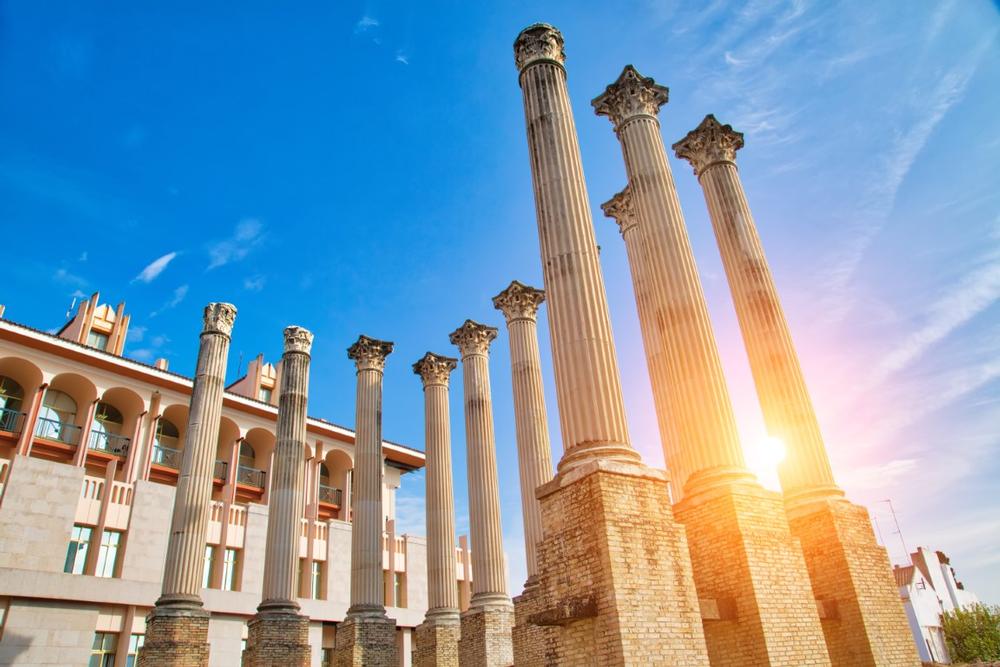
© skylarkstudio/stock.adobe.com
While excavating to expand the Town Hall in Cordoba, the remains of a Roman Temple
were discovered. It is a large structure, 32 m by 16 m, and is thought to have been built over forty years, starting in the time of Emperor Claudius (41-54) AD. It was built on a raised podium with six columns at the entrance and ten down each side. Only the foundation, some of the columns and the altar remained. The temple has been partially reconstructed. Parts of the original building can be found in museums and around the city.
Cordoba Templo Romano, Calle Capitulares, Córdoba 14003, Phone: +34-9-57-20-17-74
What to do if you are traveling with kids:
4. Stroll Across the Historic Roman Bridge at Sunset
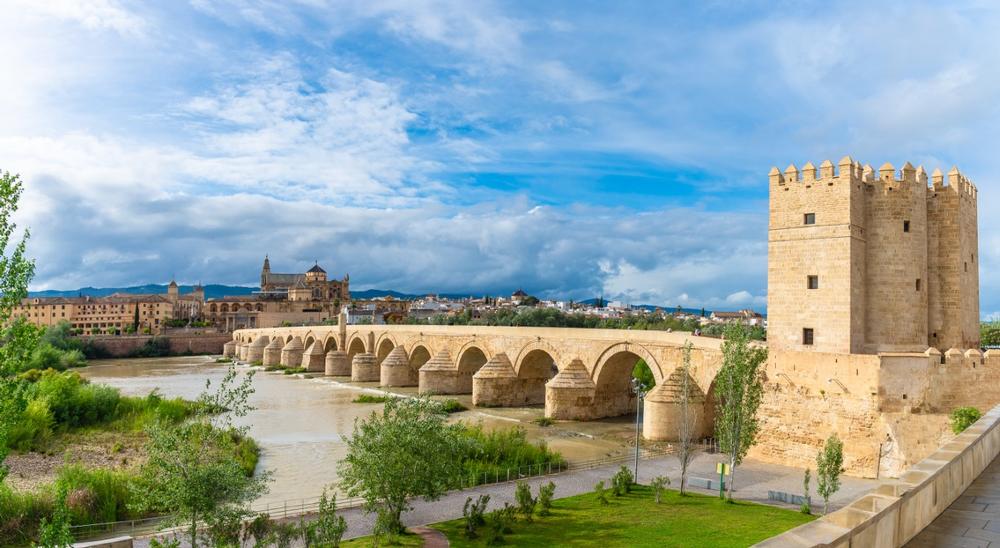
© Kess16/stock.adobe.com
The Roman Bridge across the Guadalquivir River was built in the first century. It is thought to have carried the Via Augusta, the road that linked Rome to Cadiz on the Iberian coast. The bridge has been reconstructed several times, even as late as Medieval times. Most of what remains was constructed by the Moors in the 8th century. It is 247 m by 9 m and currently has 16 arches. There were originally 17 but only two of those remain. Most of the arches are rounded but four are pointed. A statue of St Raphael was placed at the halfway point in the 17th century.
5. If You Want Stunning Views and Stories, Climb Torre De Calahorra
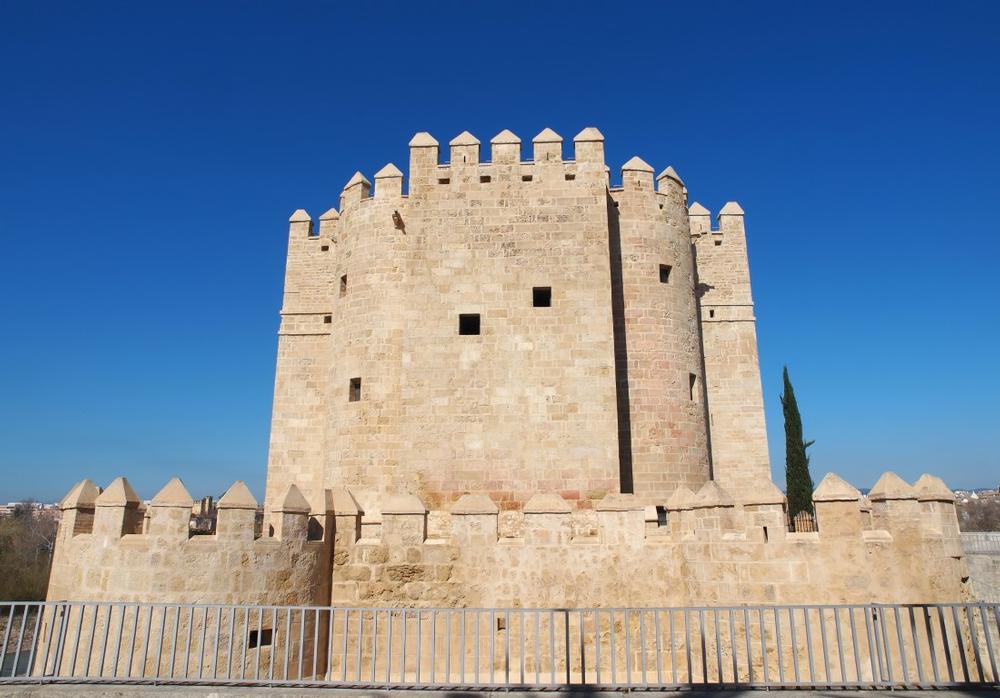
© tonigenes/stock.adobe.com
The tower on the left bank of the Guadalquivir River was first mentioned during the time of the Christian conquests of the 13th century. It was established in order to control movement over the Roman Bridge. A tower, moat and drawbridge were added in the 14th century. Changes were made to accommodate the new gunpowder weaponry of the 15th century. It was subsequently used as a prison, barracks and girls' school. It currently houses the Al Andalus Living Museum and enjoys the highest preservation protection in the land. The museum showcases Andalusian culture and the collaboration between Christian, Jews and Muslims.
Torre De Calahorra, Puente Romano , 14009 – Córdoba, Phone: +34-9-57-29-39-29
6. Pass Through History at Cordoba’s Iconic Bridge Gate
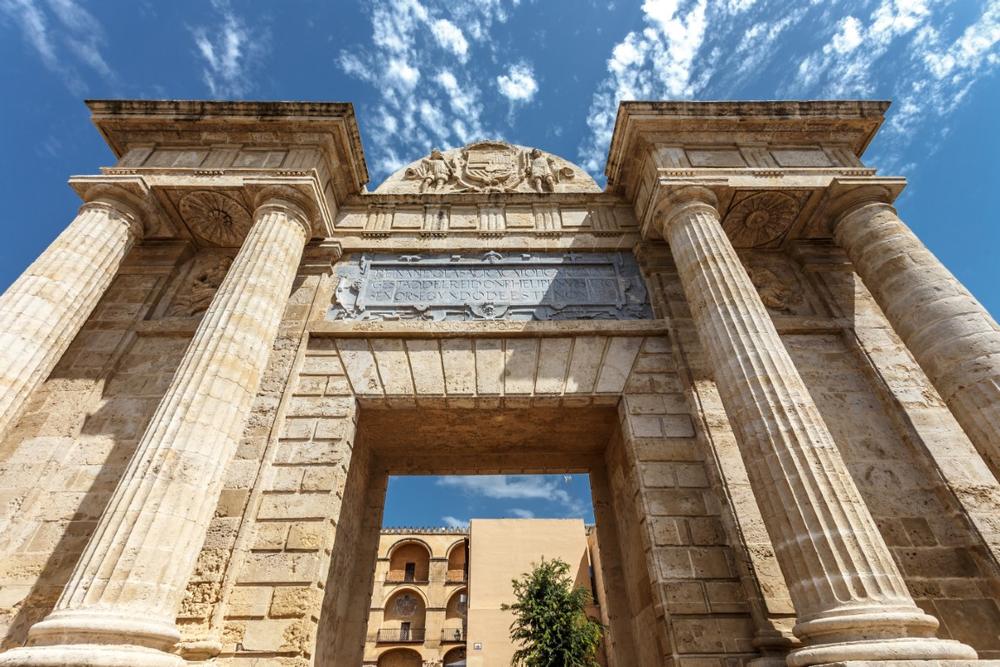
© Visual Intermezzo/stock.adobe.com
The Bridge Gate / Puerta del Puente originally formed part of the city walls. After the Christian conquest in the 13th century, it was made into a gateway for the road leading south out of Cordoba. It was called Algeciras Gate. In the 14th century it was redesigned in grand monumental style, in honor of the visit of Philip II. The door has a lintel and a curved,carved pediment above it. On either side are two columns, raised on platforms. It is open to the public. There is a permanent exhibition telling the story of the bridge. A balcony at the top level affords visitors a view of the city.
Activities and Attractions for Couples:
7. If You Love Flavor Adventures, Hop Between Cordoba’s Tapas Bars

© click_and_photo/stock.adobe.com
Andalusia has a reputation for gastronomical delights. Seafood, Mediterranean vegetables, olive oil, nuts and cheeses are combined in a myriad of ways that create the culinary culture of the region. Tapas are snacks or samples of the variety of dishes available. Several dishes would be presented for a main course or group dinner, paired with local wines. Tapas Bar tours can be self-guided or led by a local tour guide. Several restaurants are visited in an evening. This gives restaurants opportunities to show off their signature dishes and for visitors to experience several restaurants in a short space of time.
8. Wander Through Cordoba’s Dreamy Patios in Bloom

© Noradoa/stock.adobe.com
The annual Festival of the Courtyards - patios in Cordoba, in early May, is an Intangible World Heritage Event. Visitors walk around the historic city center and get a glimpse into the way of life of the residents. Courtyards are traditionally used for dining al fresco and socializing. Each year, participants compete and grow a profusion of spring, early summer and perennial flowering plants in the courtyards. During the daytime they are a feast for the eyes and at night the fragrances of jasmine and orange blossoms come into their own. Tours can be arranged through the Visitors' Center at other times of the year.
9. Explore Lavish Gardens and History at the Palace of Viana

© bennymarty/stock.adobe.com
The Palace of Viana de Cordoba, built in the 15th century, was the home of nobility until 1980. The incumbent Marquise tried to sell the palace surreptitiously on the foreign market. The local authorities got wind of his plans and came to an arrangement to acquire the palace for posterity, along with all the furniture, paintings, tapestries, ceramics and other artifacts. These are on view in the museum on the first floor. The palace is renowned for its 12 patios or mini-gardens which offer welcome shade in summer. They all have different characteristics and tell the history of the occupants through the ages.
10. Capture the Perfect Photo Strolling Cordoba’s Alley of the Flowers

© lapas77/stock.adobe.com
One of the most popular images of Cordoba is the Alley of the Flowers. It is situated in the Jewish Quarter, not far from the Mezquita. The alley is narrow and is best viewed in early May when countless pots of geraniums adorn the walls. In the mid 1900s an architect created simulated sidewalks, created arches and recesses and painted all the cottages white to best show off the flowers. Many of the old houses are now souvenir shops. The alley ends in a square containing a fountain, which is a private courtyard. The iconic view skyward is of the Cathedral's bell tower.
Must-see if you are a first-time visitor:
- Explore the Alcázar de los Reyes Cristianos – Wander lush gardens, historic towers, and ancient mosaics.
- Walk across the Roman Bridge – Capture postcard-worthy views of the Guadalquivir River and Old Town skyline.
- Relax at the Arab Baths (Hammam Al Ándalus) – Soak and unwind in luxurious, traditional bathhouses.
Where I Like to Eat
- Bodegas Campos – Legendary spot for traditional Andalusian dishes and atmospheric dining rooms.
- Casa Pepe de la Judería – Dine on local specialties like salmorejo and flamenquín in a historic setting.
- Taberna La Montillana – A casual and beloved tapas bar featuring Córdoba’s finest regional flavors.
My favorite local events:
- Patios de Córdoba Festival (May) – Wander through private homes opened to showcase spectacular floral patios.
- Cata del Vino Montilla-Moriles (April) – Wine lovers can sample local wines at this festive tasting event.
- La Feria de Córdoba (late May) – Enjoy flamenco, food, music, and fairground rides at the city's biggest annual fair.
My favorite day trips within 30 Minutes to 1 Hour of Córdoba, Spain:
- Medina Azahara (20 min) – Explore the ruins of a 10th-century Islamic palace-city just outside Córdoba.
- Almodóvar del Río (25–30 min) – Visit a stunningly preserved medieval castle used in Game of Thrones.
- Montilla (40–45 min) – Tour traditional bodegas and sample the famous Montilla-Moriles wines.
- Zuheros (1 hr) – Discover one of Spain’s prettiest villages, with a cliffside castle and scenic olive groves.
- Baena (1 hr) – Learn about olive oil production and explore historic streets and Roman heritage.
- Castro del Río (45 min) – Known for its artisan furniture and quiet old-town charm.
Plan Your Trip


